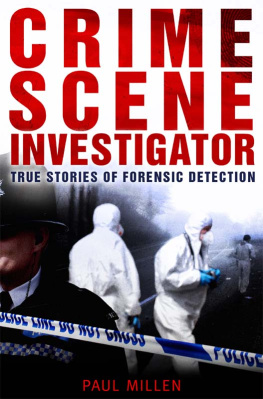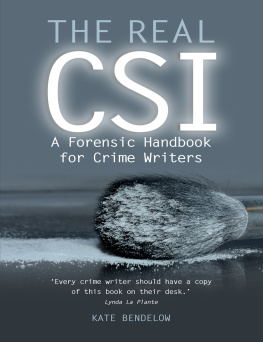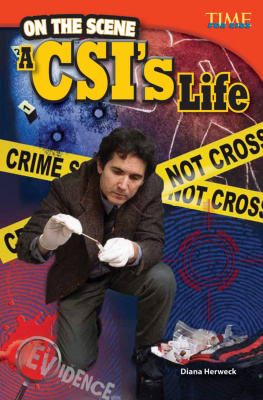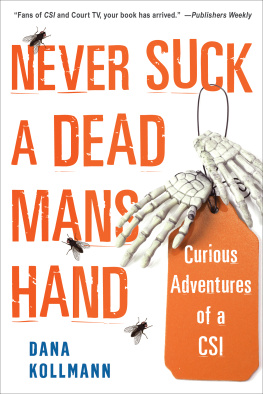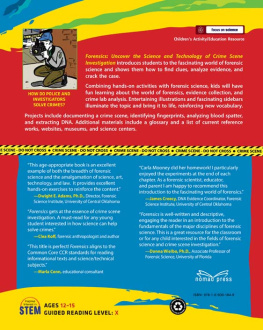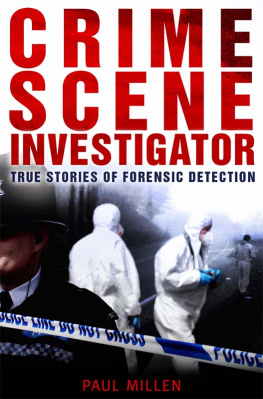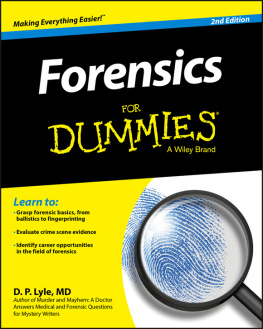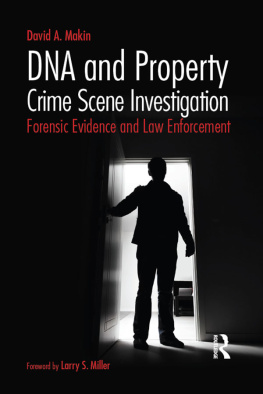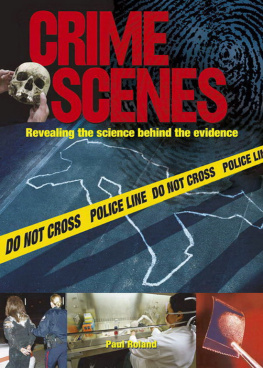
Epilogue
My work as a crime scene investigator has taught me many things. Firstly, there is the absolute need to accurately and methodically record the crime scene, then to observe and listen, plan, act, reflect and review. There is a need to maintain the integrity of notes, photographs and any material that is recovered. This will ensure that the investigation can be examined and re-examined. On this foundation, no matter what scientific practice is applied or subsequently becomes available, there is a known starting point, an anchor. It may alleviate or even stop the most determined conspiracy theorist.
I have been both fortunate and troubled to see the horror and grief of man, humanity at its worst and also at its best. When people rise above the trauma, it is a gift to witness. The search for the truth, although demanded by the vast majority of victims, can also add to their pain.
This was the case with the young woman who had awoken in her basement flat to find a man beside her who then raped her. She was certainly not comforted by the fact that, two months before, a young neighbour, two doors away, had suffered the same fate. Had he been returning to attack the same victim again? It was quite possible. My examination of the scene revealed fingermarks outside the rear window of her flat where the offender had climbed in. Blood grouping obtained from semen found on a vaginal swab taken from the victim revealed that the rapist was a group B secretor, as in the earlier offence. At the earlier scene a colleague of mine had found only one area of a palm print. He had recovered it from the surface of a vacuum cleaner which the offender had pushed away during the violent struggle with the victim.
A dedicated fingerprint expert at New Scotland Yard managed to identify the grubby finger mark which I had found on the outside surface of the window frame. It led to a closer examination of the palm mark, which was also then identified. A suspect was arrested and blood and saliva samples obtained. He was a group B secretor. He denied the offence and stood trial at the Central Criminal Court. On the day of the trial with both victims present, I witnessed him plead guilty to the first offence, the second remaining on file. This meant he was not convicted of raping the second victim and the victim was denied her justice. The fact was that the marks which I had found were outside and although in an enclosed, quite private garden, they still only placed him outside. DNA evidence was many years off. The only comfort was that had I not found the finger marks he would not have been identified as the donor of the palm mark at the earlier offence. This is because it was on an area of the hand which could not at that time be searched.
I still recall the look of despair on the victims face as she tried to make sense of what she was going through. The suspect was sentenced to a term of imprisonment for the offence of which he was convicted. The second offence probably would not have added any more time, but that was of no consolation to the second victim. He had not been convicted of raping her. Some twenty three years later as I prepared to write this book, I heard on the radio about a man who had been convicted of a rape in the same area in very similar circumstances. Science, I was told, had convicted him. I immediately recognised the name of the convicted man. It was the same man and my heart sank to think that yet another woman had suffered at his hands.
It is times like those that makes even the most dedicated investigator wonder whether it is all worth it. But it is. Justice cannot be dispensed if the truth is not found and not known. The deficiencies, or what might seem to many as safeguards, of our legal systems are not the business of the investigator and it is best to detach oneself from them.
The scale of the investigators task often seems overwhelming. The only way to overcome this is to break the problem down into bite-size questions to which bite-size answers can be found. That is the way to build up a picture which others can see and recognise as sound even if there are weak spots. That is equally important.
The search for the truth is a noble cause. However, not all crime is detected and not all offenders are brought to book. The truth is out there. For every contact there is a trace. For every action there is a reaction and in the reaction there are artefacts. There lies the evidence.
The detection of crime is solely in the hands of the investigator, their skill, tenacity and often luck. If you search hard and wide enough, that luck will also be found.
For those offenders who manage to evade justice on earth there is one last catch. Those who choose a life of crime should remember that there are always two people who will know the truth. The first is the offender. For those of faith there is a second. Although the evidence for the existence of a superior being may not meet with earthly legal standards, there is hope and faith. It may seem strange that a man of science may be drawn into such feelings. I draw a distinction between that physical evidence which I would expect and demand in a court of law and that which I feel in my human emotion.
Although some offenders escape the attentions of mortal investigators, there is comfort for the pained and troubled victims of crime, even when there seems no hope of closure. For me there is always a second and final person who knows the truth, the innocent and the guilty, and there is no escaping His investigation and His justice. He is the final arbiter. That person is God.

1. Young Sherlock
Still holding the gun, I stood in front of the vehicles shattered windscreen. The glass was everywhere. I was about to get caught, my heart was racing but for some reason my legs were not.
I grew up on a pleasant housing estate in south London and a regular and daily visitor to our street was the Unigate milk float, driven by a rotund, tall, red-faced, jovial and kind milkman who we knew only as Milko. He was a constant and reliable presence who embodied all the best virtues of friendship and neighbourliness as he went about his daily task of delivering fresh milk to all the houses and flats on the estate. He would always be in the background at some time during the day as we played.
Two events as a child had a profound effect on me and probably determined my future professional career.
The first occurred while playing with my friends, Billy, John and Jo-Jo. I had been bought as a birthday or Christmas gift, a cowboy outfit (some might think I was to work for at least one in later life) complete with cowboy hat and belt and toy pistol. Prized amongst the set was a mechanical pop gun. It was of thin metal construction and popular amongst young boys growing up in the 1960s. It had a long barrel rather like a toy rifle or shotgun. At the end was a cork which could be placed in the muzzle and pop out under pressure when the trigger was pulled with an accompanying satisfactory bang. To prevent injury or similar, the cork was attached to the barrel at one end by a chain or piece of string so it didnt fly too far.
Well, this wasnt good enough for Jo-Jo. A year or two older than me, he was the maverick leader of our little gang.
On that fateful day Jo-Jo and I were playing in the driveway of the block of flats where he, Billy and John all lived. Milko was in the flats delivering the milk and Jo-Jo and I were outside. The front of Milkos electric milk float was facing us. Jo-Jo had the idea of replacing the supplied cork with a handful of small stones picked up from the gravel. Placing them in the barrel he pointed it directly at the windscreen of the milk float and pulled the trigger. The sound of the shattering windscreen was deafening. At this point Jo-Jo handed me the gun and shot off like a rocket to hide. I stood there for what seemed to be an eternity, not really understanding what had happened. I dont know if I had intended to run, wasnt fast enough or just plain stupid but in any event I didnt move. Milko quickly emerged from the flats (the fastest I had ever seen this mature man move) where he confronted me. A short blond-haired boy wearing a pair of baggy shorts and a dumb expression was standing at the scene of the crime, holding the offending weapon. I was caught red-handed, bang to rights as I would later know the term to be. The evidence was all around. The offender was still holding the weapon and the shattered glass of the screen said it all.
Next page
